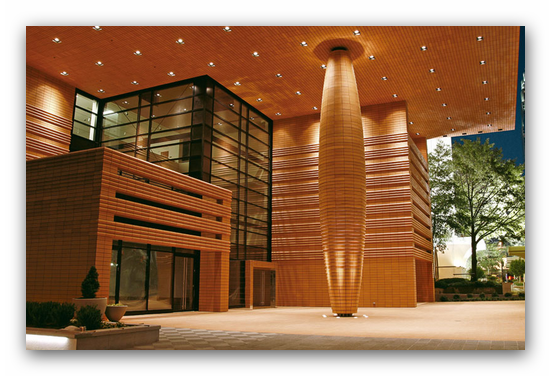Nov 17 2018 - Mar 17 2019
Charlotte, NC
"We are living In a mechanical age, in which plaster and paint on canvas are no longer meaningful . . . Analysis and synthesis, meditation and spontaneity, construction and sensation, are all values which come together to work in union; and their development in experience is the only way to achieve a complete demonstration of being. . . We imagine synthesis as the sum total of the physical elements: color, sound, movement, time, space, integrated in physical and mental union. . . These are fundamental to the new art which encompasses the four dimensions of existence. Time and space." -- Lucio Fontana, “Manifesto Blanco,” 1946, written with students at the Altamira Escuela Libre de Artes Plástica, Buenos Aires
Latin Americans in Paris presents selected Latin American artists who, inspired by the teachings of European artists such as Max Bill and Victor Vasarely and the Argentinian-Italian Lucio Fontana, moved to Paris in the mid-20th century to live and work. Their presence in Europe initiated a cultural and ideological exchange between artists, leading to innovations that would influence and effect Western art production for the succeeding generations of artists.
The principal artists of focus are Martha Boto, Carlos Cruz-Diez, Julio Le Parc, Jesús Rafael Soto, and Gregorio Vardanega. These Latin Americans are shown in conjunction with the European artists in the Bechtler collection that overlapped historically or aesthetically including Josef Albers, Max Bill, Richard Lohse, Willy Müller-Britnau, Niki de Saint Phalle, Daniel Spoerri, Jean Tinguely, and Victor Vasarely. All of these Latin American artists working in Paris had a role in pioneering kinetic art, a new approach to making that incorporated movement into an art work, whether a flat two-dimensional piece or a light-emitting, spinning sculpture.
It was not only the artwork that changed, but also, the expectations of the relationship between the artist, the art, and the audience. When the work became activated, so did the space between it and the viewer, creating a dynamic relationship. Many of the same artists interested in making their art emotionally and intellectually accessible also sought to make it acquirable, developing multiples of their dynamic art and at an affordable price. They preferred that many have the opportunity to own and enjoy their objects rather than elevate the value of a single piece as a unique work of art. In subsequent decades this became a widespread practice amongst artists, but the challenges specific to a kinetic work of art---moving pieces, lighting components, sound mechanisms---made these works more complicated to duplicate than a cast sculpture or a pulled print. It also emphasized the importance of the audience to the vitality and existence of the artwork made by this group of artists.
While exhibitions of Latin American artists have increased in frequency internationally over the last thirty years, this exhibition examines them in the broad context of their European counterparts and emphasizes the lateral exchange between the two cultures—examining the influence the Latin Americans had on their European colleagues and the inverse. One significant influence we examine is the rise of the multiple during this period, proposing a link between the inherent philosophy of the kinetic artists and the urgency to make art available to a larger, more diverse audience. Le Parc, Saint Phalle, Spoerri, Cruz-Diez and these others saw the viability of the multiple as a medium that combined aesthetic integrity with commercial production in a way that could balance the narrow intersection between capitalist and socialist ends.
Credit: Exhibition overview from museum website
Exhibition Venues & Dates
Nov 17 2018 - Mar 17 2019
Charlotte, NC
